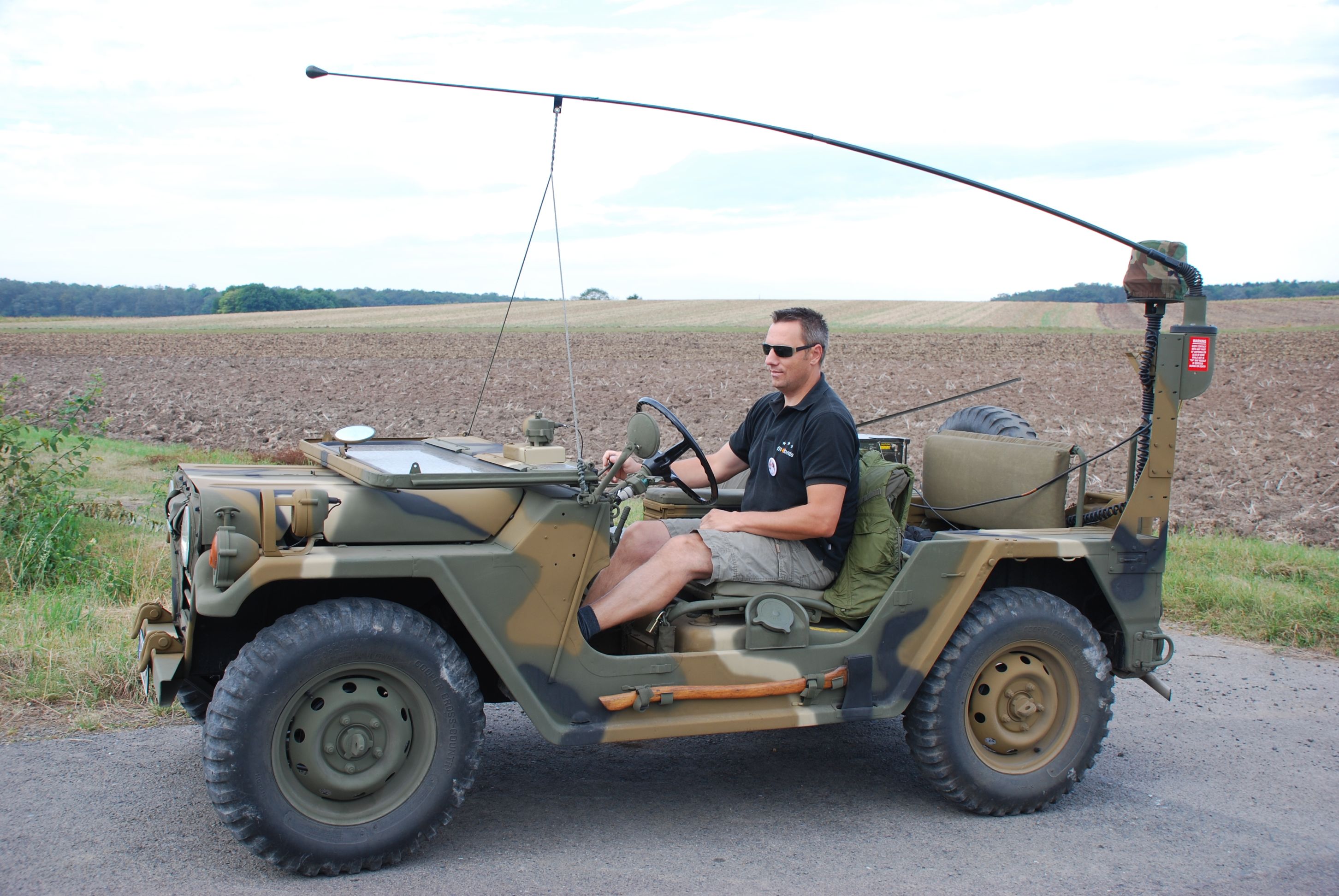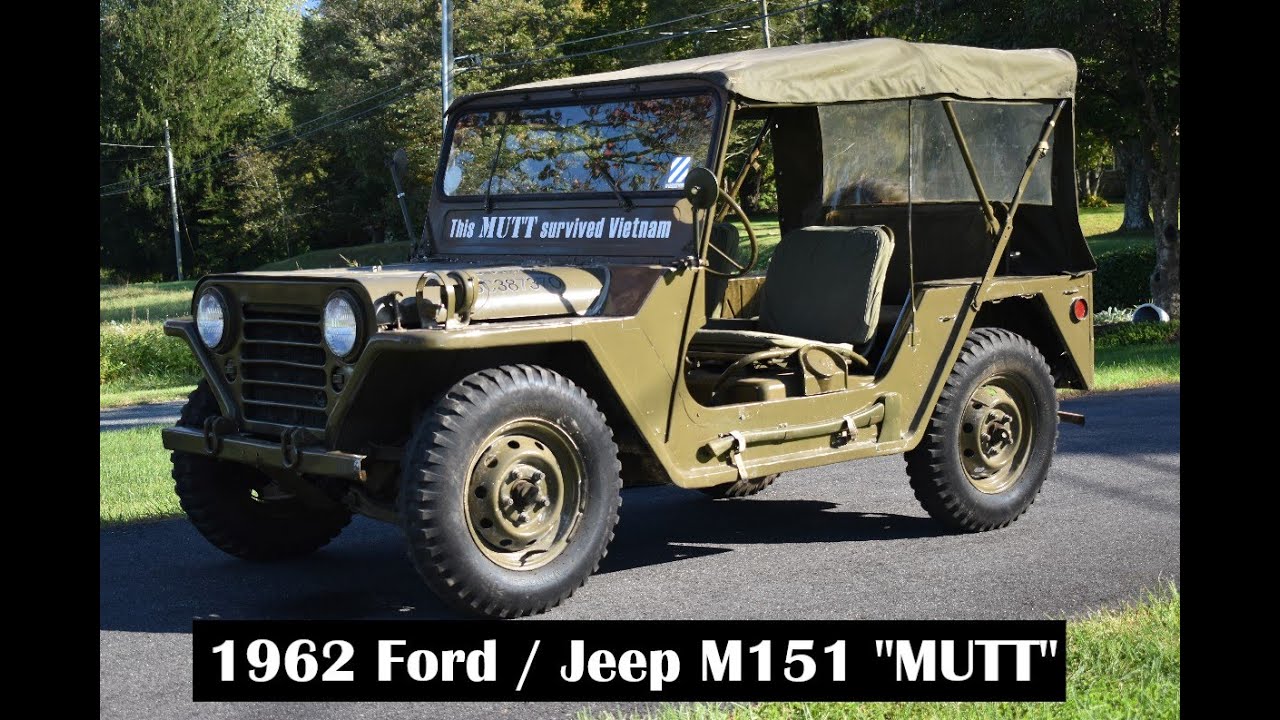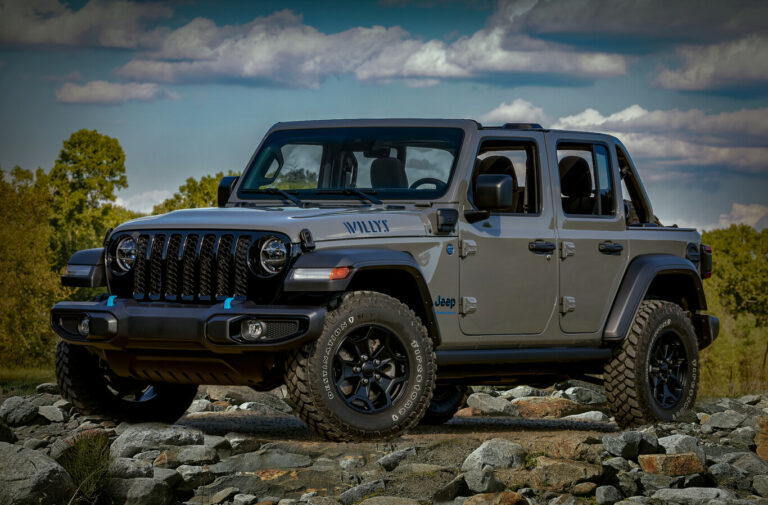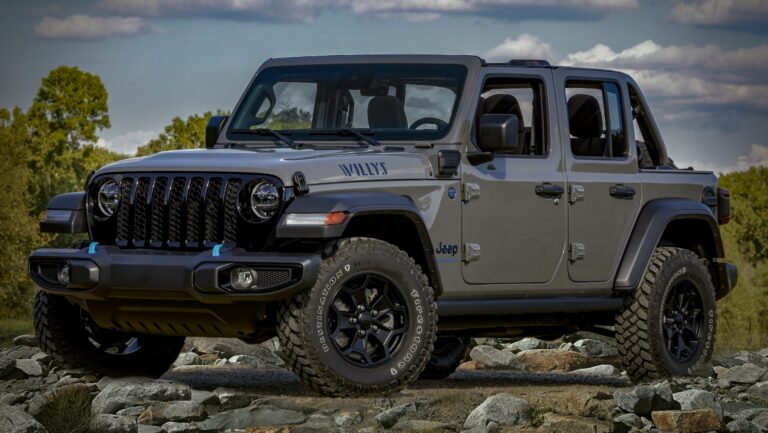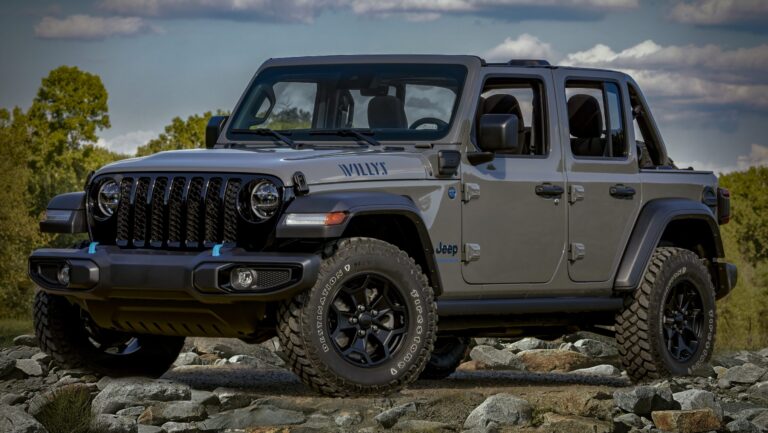M151 Mutt Jeep For Sale: Your Comprehensive Guide to Owning a Piece of Military History
M151 Mutt Jeep For Sale: Your Comprehensive Guide to Owning a Piece of Military History jeeps.truckstrend.com
The rumble of its engine, the utilitarian lines, and the unmistakable silhouette – the M151 Military Utility Tactical Truck, affectionately known as the "MUTT," is more than just a vehicle; it’s a tangible piece of American military history. Succeeding the legendary Willys Jeep, the M151 served as the primary light tactical vehicle for the U.S. armed forces for over three decades, from the jungles of Vietnam to the deserts of the Middle East. For enthusiasts, collectors, and those seeking a unique off-road experience, the prospect of an M151 Mutt Jeep for sale presents an exciting opportunity.
This comprehensive guide is designed to navigate the intricate world of acquiring an M151 MUTT. We’ll delve into its historical significance, what makes it a compelling purchase, where to find one, critical inspection points, the often-complex legalities of ownership, and practical advice for maintaining this iconic vehicle. Whether you’re a seasoned collector or a curious newcomer, understanding these facets is crucial before embarking on your M151 journey.
M151 Mutt Jeep For Sale: Your Comprehensive Guide to Owning a Piece of Military History
The M151 MUTT: A Brief History and Enduring Legacy
Born from the design prowess of Ford Motor Company in the mid-1950s, the M151 was a revolutionary leap forward from its predecessors, the M38 and M38A1 Jeeps. Introduced into service in 1959, the M151 featured a modern unibody construction, significantly lighter and stronger than traditional body-on-frame designs. Its most groundbreaking feature was an independent coil spring suspension on all four wheels, offering superior ride quality, handling, and off-road articulation compared to the rigid axles of earlier Jeeps.
Over its long production run, several variants emerged:
- M151: The original model, produced from 1959.
- M151A1: Introduced in 1964, featuring minor improvements, primarily to the electrical system and an upgraded rear suspension for carrying heavier loads.
- M151A2: The most common and recognizable variant, introduced in 1969. It featured a completely redesigned rear suspension system that significantly improved handling and addressed the rollover concerns associated with the earlier M151 and M151A1 models when cornering aggressively, especially unladen. This model is generally the most sought-after by civilian buyers due to its improved safety and performance characteristics.
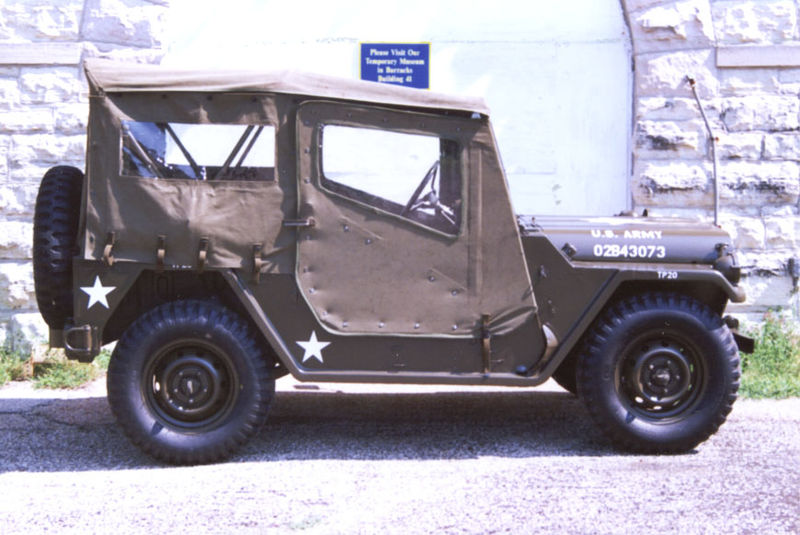
The MUTT saw extensive service in Vietnam, where its agility and ruggedness proved invaluable. It continued to serve in various capacities worldwide, including reconnaissance, command and control, troop transport, and even as a platform for TOW missile launchers. By the late 1980s and early 1990s, the M151 was gradually phased out, replaced by the High Mobility Multipurpose Wheeled Vehicle (HMMWV), or Humvee. Due to safety concerns (primarily with the early models’ swing-arm suspension) and a policy aimed at preventing military vehicles from falling into potentially hostile hands, the vast majority of M151s were systematically destroyed by the U.S. government, often by cutting their frames into three pieces. This deliberate destruction makes the surviving M151s a rare and coveted commodity.
Why Buy an M151 MUTT? The Allure and Appeal
The appeal of owning an M151 MUTT is multifaceted, drawing in a diverse group of enthusiasts:
.jpg)
- Historical Significance: Owning an M151 is owning a piece of living history. It connects you directly to the conflicts and peace-keeping missions of the Cold War era and beyond.
- Unique Driving Experience: Unlike modern vehicles, the M151 offers a raw, unfiltered driving experience. You feel connected to the road (or lack thereof), and its mechanical simplicity is a refreshing change.
- Off-Road Prowess: With its independent suspension and robust 4×4 system, the M151 is surprisingly capable off-road, making it a favorite for trail riding and outdoor adventures.
- Collectibility and Investment: While not typically a get-rich-quick investment, well-preserved or authentically restored M151s, especially the M151A2, tend to hold or increase in value, particularly those with clear, legitimate titles.
- Community and Support: A vibrant community of M151 owners exists, offering invaluable support, technical advice, and camaraderie. Joining military vehicle clubs can open doors to parts suppliers, repair shops, and historical events.
- Customization Potential: While many prefer to restore them to original military specifications, some owners enjoy customizing their MUTTs for specific off-road uses or personal expression, adding modern amenities while retaining its classic charm.
.jpg)
Navigating the Market: Where to Find an M151 MUTT For Sale
Finding an M151 MUTT for sale requires diligence and knowing where to look:
- Online Marketplaces: Websites like eBay, Craigslist (exercise extreme caution), Hemmings, and dedicated military vehicle forums (e.g., G503.com) are common places to find listings.
- Specialized Military Vehicle Dealers: A handful of dealers specialize in ex-military vehicles. These often have a better understanding of the vehicles’ nuances and may offer more reliable inventory, albeit at a premium.
- Auctions: Government surplus auctions (though less common for whole, intact M151s now), and private classic car or military vehicle auctions can yield results. Be prepared to inspect thoroughly or hire an expert for auction purchases.
- Word-of-Mouth and Clubs: Networking within military vehicle collector clubs and communities can be highly effective. Owners often know of others looking to sell or trade.
- Farm/Private Sales: Sometimes, these vehicles resurface from long-term storage on private property. These "barn finds" can be highly rewarding but often require significant restoration.
Regardless of the source, always prioritize due diligence. Request detailed photos, maintenance records, and most importantly, clear documentation of ownership and title status.
What to Look For: Inspection and Condition Assessment
Before committing to an M151 Mutt for sale, a thorough inspection is paramount. Many of these vehicles have lived hard lives, and rust, neglect, and questionable modifications are common.
- Chassis and Body: This is the most critical area due to the unibody construction and the government’s destruction policy.
- Rust: Check thoroughly for rust, especially in the floorboards, frame rails (integral to the unibody), wheel wells, and behind the battery box. Surface rust is manageable, but extensive structural rust can be a deal-breaker.
- "Cut and Reweld": Be extremely wary of vehicles that appear to have been cut and re-welded. This was a common method to bypass destruction policies, but it severely compromises structural integrity and, more importantly, often makes them impossible to title legally for road use. Look for evidence of welding on the main frame rails.
- Accident Damage: Inspect for signs of previous accidents or heavy impacts.
- Engine and Drivetrain:
- Engine: The M151 typically uses a 2.3L (141 cu in) 4-cylinder engine. Check for leaks, unusual noises, smoke from the exhaust, and overall running condition. Ask about recent maintenance.
- Transmission and Transfer Case: The M151 uses a 4-speed manual transmission and a 2-speed transfer case. Check for smooth shifting, engagement of 4×4, and any grinding noises.
- Differentials: Check for leaks and excessive play.
- Suspension: The independent suspension is a key feature. Inspect control arms, ball joints, shock absorbers, and coil springs for wear, damage, or leaks.
- Electrical System: The M151 uses a 24-volt electrical system, which is different from most civilian vehicles. Check the condition of wiring, lights, gauges, and the battery (often two 12V in series). Frayed wires or poor connections can be a nightmare.
- Interior: While spartan, check the condition of seats, dashboard, and instruments. Ensure all gauges function.
- Tires and Wheels: Look for even tire wear, cracks in the sidewalls, and wheel damage. Original military tires might be old and unsafe for regular use.
- Documentation: This is critical. Demand to see a clear, legitimate title in the seller’s name. A bill of sale alone is often insufficient and can lead to significant legal headaches (more on this below).
The Legality Conundrum: Street Legal vs. Off-Road Use
Perhaps the most significant hurdle when considering an M151 Mutt for sale in the United States is its legal status for street use. Due to the U.S. government’s policy of destroying M151s upon decommissioning (primarily related to the early models’ handling characteristics and concerns about military hardware falling into civilian hands or being re-exported), the vast majority of M151s cannot be legally titled for road use in the United States.
- The "Destroyed" Status: Most M151s that entered the civilian market were either acquired through loopholes (e.g., by foreign governments then resold, or illegally) or were reconstructed from the "cut and re-welded" frames. States are generally reluctant to issue titles for vehicles with such a history, especially if they were officially "destroyed" by the military.
- State-by-State Variation: While the general federal stance is against street-legal M151s, some states have, in the past, issued titles for them, often classifying them as "off-road vehicles," "parade vehicles," or "military surplus." However, this is becoming increasingly rare, and many states are actively revoking such titles.
- The M151A2 Exception (and Caution): While the M151A2 addressed the primary safety concerns of the earlier models, the overarching policy of destruction still applied. If an M151A2 has a legitimate, provable chain of ownership and a clear title from before the destruction policy was strictly enforced (e.g., from an overseas sale to a civilian who then imported it legally), it might be possible to title it. However, this is an uphill battle.
- Practical Use: For most buyers, an M151 is destined for off-road use, private property adventures, military vehicle shows, parades, or as a static display piece. If street legality is a must, be extremely cautious and consult your local Department of Motor Vehicles (DMV) with the specific VIN and documentation before purchase. Never assume it can be titled.
Owning and Maintaining Your M151 MUTT
Once you’ve acquired your M151, the journey continues with ownership and maintenance.
- Parts Availability: Despite their age and rarity, parts for M151s are surprisingly available. Specialized military surplus dealers, online forums, and dedicated parts manufacturers reproduce many components. While not as cheap as common car parts, most critical items can be sourced.
- Maintenance: The M151’s mechanics are relatively straightforward for anyone familiar with older vehicles. However, the 24-volt electrical system can be a challenge for those accustomed to 12V systems. A good technical manual (like the TM 9-2320-218-34 for the M151A2) is indispensable.
- Insurance: Standard auto insurance companies may refuse to insure an M151 for road use due to its military designation and legal status. You’ll likely need specialized classic car insurance or an off-road vehicle policy if you plan to use it off-road or for parades.
- Storage: Like any classic vehicle, proper storage is key to preventing rust and degradation. A dry, covered space is ideal.
- Joining the Community: Becoming part of a military vehicle club or online forum is highly recommended. These communities offer a wealth of knowledge, buying/selling opportunities, and shared experiences.
M151 MUTT Jeep For Sale: Estimated Price Guide
The price of an M151 MUTT varies significantly based on its condition, originality, variant (M151, A1, A2), and critically, its legal title status. The presence of a clear, legitimate title for road use dramatically increases the value, while a bill of sale only, or a questionable title, will significantly depress it.
| Condition Category | Description | Estimated Price Range (USD) | Key Considerations |
|---|---|---|---|
| Project/Parts | Non-running, significant rust/damage, incomplete. Requires full restoration. | $2,500 – $6,000 | Ideal for skilled restorers. Likely sold with Bill of Sale only; difficult/impossible to title for road use. Value primarily in parts or as a long-term project. |
| Fair/Running | Runs and drives, but needs considerable mechanical, body, or electrical work. | $6,000 – $12,000 | Can be driven, but not reliably. Expect significant investment in repairs and restoration. Often sold with Bill of Sale or salvaged title; road legality highly uncertain. |
| Good/Driver | Mechanically sound, minor cosmetic flaws, mostly complete and original. | $12,000 – $20,000 | Suitable for immediate use (off-road, parades). May or may not have a legitimate road-use title. Title status is the primary factor influencing price in this category. |
| Excellent/Restored | Fully restored to original military specifications, show-quality, or meticulously maintained original. | $20,000 – $40,000+ | Rare and highly sought after. Often comes with clear, legitimate documentation and a history that may support road titling (though still challenging). Top dollar for authenticity. |
| Special Variants | M151A2 TOW missile carrier, M718 Ambulance, etc. | Varies widely, potentially higher | Niche market. Value depends on rarity, completeness, and historical significance. |
Note: These prices are estimates and can fluctuate based on market demand, location, seller motivation, and, most critically, the vehicle’s documentation and title status. Always factor in potential restoration costs, parts, and shipping.
Frequently Asked Questions (FAQ) about M151 MUTT Jeeps
Q1: Is the M151 Mutt street legal in the U.S.?
A1: Generally, no. Due to U.S. government policies regarding the destruction of decommissioned M151s (to prevent their use by adversaries and due to original safety concerns), most cannot be legally titled for road use. Some older, legitimately imported units or those with historical titles might exist, but this is rare and challenging. Always confirm with your local DMV before purchase.
Q2: Where can I get parts for an M151?
A2: Parts are surprisingly available through specialized military vehicle surplus dealers, online forums, and companies that reproduce original components. The M151 community is also a great resource for sourcing parts.
Q3: Are M151s hard to maintain?
A3: Mechanically, they are relatively simple, similar to older vehicles. However, their 24-volt electrical system can be tricky for those unfamiliar with it. A good technical manual is essential. Rust prevention and chassis integrity are ongoing concerns.
Q4: What’s the difference between M151, M151A1, and M151A2?
A4: The M151 is the original. The M151A1 had minor electrical and rear suspension upgrades. The M151A2, introduced in 1969, featured a significantly redesigned rear suspension that improved handling and addressed rollover concerns, making it the most desirable variant for civilian owners.
Q5: Are M151s safe to drive?
A5: Compared to modern vehicles, M151s lack airbags, ABS, stability control, and crumple zones. The early M151 and M151A1 models had a known rollover tendency if cornered too aggressively, especially unladen. The M151A2 improved this significantly. They are raw, utilitarian vehicles and require a driver attentive to their limitations.
Q6: Can I get financing for an M151?
A6: Traditional auto loans are unlikely. You might be able to secure a personal loan, a classic car loan (if it qualifies as such and has a clear title), or use a line of credit. Many purchases are cash-based.
Q7: Why were most M151s destroyed by the government?
A7: Primarily for two reasons: 1) To prevent military-grade vehicles from falling into potentially hostile hands or being re-exported. 2) Concerns over the safety of the early M151 and M151A1 models’ swing-arm suspension, which could lead to rollovers under specific conditions. This led to a policy of cutting frames into three pieces upon decommissioning.
Conclusion
The M151 MUTT is a remarkable machine, a testament to American engineering and a symbol of decades of military service. For those drawn to its history, its rugged capability, and its unique charm, owning an M151 can be an incredibly rewarding experience. However, the journey to ownership is not without its complexities, particularly regarding the challenging legal landscape surrounding street legality in the U.S.
By thoroughly researching, meticulously inspecting potential purchases, understanding the nuances of its history and variants, and being realistic about its intended use, you can navigate the market effectively. While the "Mutt" may not be for everyone, for the informed and dedicated enthusiast, finding an M151 Mutt for sale offers a rare opportunity to own a tangible piece of military heritage and embark on countless adventures, both on and off the beaten path.
